When is the best time to visit Korea? When can you see the most beautiful Korean sights, enjoy delicious seasonal dishes, or take part in incredible festivals? When can you get the best views of cherry blossoms or autumn leaves? It’s never easy planning a trip. You want to make sure you choose the perfect time to visit and get the most out of your precious time. I’m here to help you work out not only the best time to visit Korea, but also what you can do and experience in each month in this Korean season guide.
The best time to visit Korea will probably be very different for most people. A lot of it depends on what you want to do, where you want to travel in Korea, what activities you want to try, and what delicious foods you want to indulge in. Some people will think the best time to visit Korea is when they can see the big festivals and enjoy outdoor activities. Others might want to visit when it’s less crowded and the costs are a lot cheaper.
The great news is that Korea has countless options for travellers no matter what season you’re travelling in and whatever you’re looking for. Each season in Korea is unique and will cater to different types of travellers and their desires.
In this Korean season guide I’m going to break down what it’s like to travel in each season month-by-month, and provide a whole range of recommendations for what to see, what to eat, where to go, and what’s special about that time.
Not only that, this guide is packed full of other tips for your journey to Korea, such as where to stay, what to wear, and what to know before travelling to Korea. If you’re in the planning stages for your Korean adventure, then you will want to check out this article about working out the costs to travel in Korea:
This guide will start with the best time to visit Korea (there are actually several times), before covering a few facts about Korea’s climate and my recommendations for when to visit. You can use the table of contents below to jump to whichever section you want to know more about or keep on reading for all the best info.
Korea Essentials:
Here are some of my favourite resources that will help you save time and money on your journey to Seoul:
Flights To Korea:
Trip.com | JetRadar
Hotels In Seoul:
Myeongdong | Hongdae | Gangnam
Recommended Tour Companies:
Klook | Trazy | Get Your Guide | Voyagin
Travel & Tour Passes:
T-Money Card | Discover Seoul Pass
Internet / Mobile:
4g Sim Card | Portable 4g WiFi
Airport Transportation:
AREX Train Ticket | Incheon Airport Pickup
Follow Me On Social Media:
Disclaimer: This site contains affiliate links and I may earn commission for purchases made after clicking one of these links. Affiliate Disclaimer
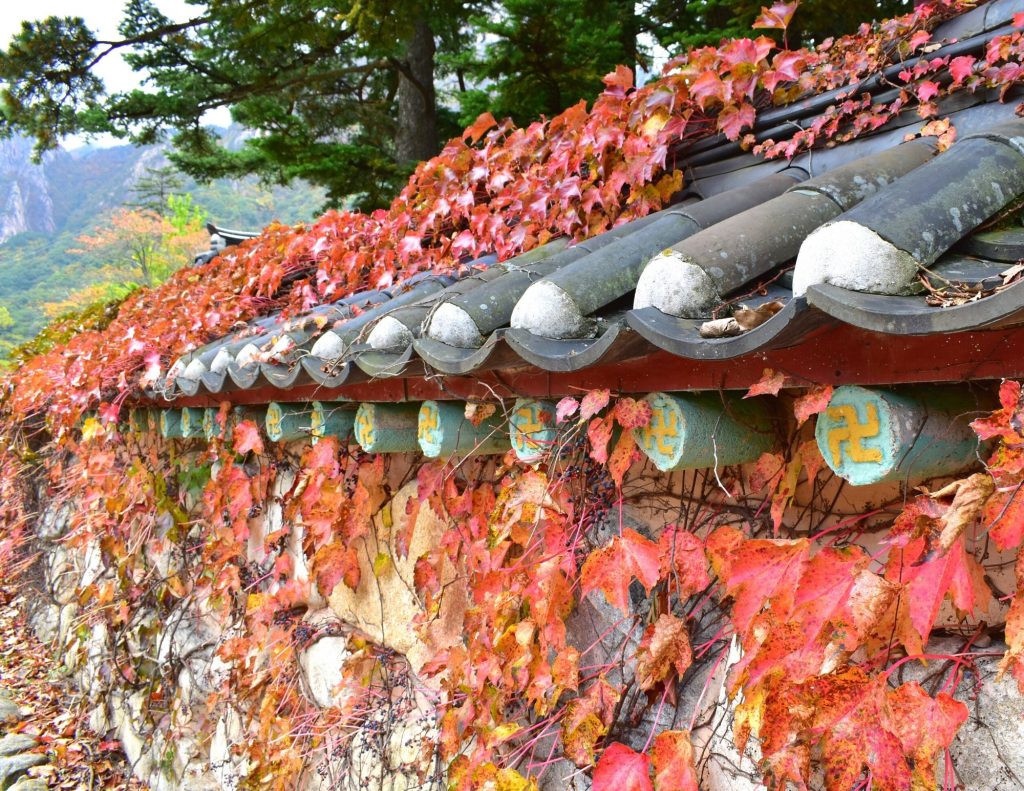
When Is The Best Time To Visit Korea?
I’d say the following months are the best time to visit Korea:
April | May | September | October
Whilst there is no ‘perfect‘ time to visit Korea, there are definitely times when it’s a lot easier to travel because the weather is better, or when there are special events on, such as cherry blossom viewings or summer music festivals.
Without a doubt the best times are when you can see spring blossoms and enjoy late summer & autumn leaves. These also have the best weather with low rainfall, warm weather, sunshine, and far fewer bugs than you get in peak summertime. However, these times are often the most crowded (and therefore expensive), but they typically provide an unmissable experience in Korea.
That’s not to say it isn’t worth visiting Korea during the rest of the year. Far from it! There are so many incredible things to do in every month and I’d recommend travelling in each one to experience the rich diversity of seasonal gifts that Korea has to offer.
To give you a better idea of what you can expect when you travel, here’s some information about when it’s busy in Korea and the weather during the year.
When Is Peak Tourism Season In Korea?
In line with the comments about the best time to visit Korea being spring in autumn, it shouldn’t be surprising that the busiest times for tourism are March – May and September – November. This is the time that the most foreign arrivals enter Korea for tourism purposes.
Korean travellers, on the other hand, most often leave Korea during the cold winter (January) and the hot summer (July & August), which is also when the school holidays occur in Korea.
Hotel prices in Korea increase the most around the cherry blossom season (late-March & early-April) and in September & October. The increase in autumn is partially due to local and international travellers coming to see the autumn leaves, but also because there is a long holiday during this period (Chuseok) and many Koreans flock to Jeju Island to enjoy a long weekend by the beach.
The Best Places To Stay In Seoul
Please note: It’s difficult to accurately report on tourism figures for the last few years. Whilst tourism to Korea has been growing steadily, the effect of travel bans by China and Japan have warped the statistics as these 2 countries make up a large part of Korea’s tourists. The effect of the coronavirus obviously renders all statistics for 2020 irrelevant.
Source: Korea Tourism Organisation
Weather Overview For South Korea
Korea’s weather changes a lot and ranges from freezing cold in winter to sweltering hot in summer. The chart below shows the average temperatures in Seoul each month. These will be different further in the south, such as in Busan or Jeju Island, where the temperatures will be a few degrees warmer.

Please note: These are average temperatures for the whole month and you’ll find that temperatures can get much hotter or colder day-to-day and there is often a big difference between day and night.
Some of the coldest temperature’s I’ve experienced in Korea occurred in January – the weather was as low as -18 degrees Celsius at night. During August, the heat and humidity can make it feel like the temperature is around 35 – 40 degrees Celsius in the middle of the day.
If you’re not a fan of extremely hot or cold weather, then spring and autumn are definitely the best time to visit Korea.
Monthly Rainfall In Korea
I’m writing this right now in July, sitting in a cafe looking out at the rain falling on the window and bouncing off the busy streets outside. It’s been raining for the last week and there have been a few floods in the country. This isn’t unusual as July is the wettest month in Korea by a long way, followed by August. Fortunately, the rest of the year is not as bad, as you can see from the table below:
| Month | Rainfall (mm) |
|---|---|
| Jan | 21 |
| Feb | 25 |
| Mar | 48 |
| Apr | 95 |
| May | 83 |
| Jun | 151 |
| Jul | 385 |
| Aug | 283 |
| Sep | 159 |
| Oct | 52 |
| Nov | 46 |
| Dec | 25 |
In case you’re worried about rain ruining your trip to Seoul, there are plenty of things you can do that are great fun and won’t involve you getting drenched. So many that I even wrote a whole article about them:
Things To Do In Seoul When It’s Raining
Summary Of Seasonal Weather In Korea
Here’s a quick summary about what sort of weather you can expect in each season in Korea:
Spring:
Cool at the start and getting warmer every day. As the blossoms start to appear, the weather warms up and May is around 20 – 25 degrees. Generally lovely weather but there can be some spring showers, especially in April. The main problem with this season is the fine dust that blows in from other parts of Asia, as well as pollution from Korea itself. .
Summer:
The start of June isn’t too bad, but the weather quickly gets hotter and by the end of June the humidity and wet weather begins. July is the wettest month and there can be floods and days with dark skies and endless rain. However, the rain brings cooler weather, which makes it bearable. August is hot, but drier. Typhoon season starts in summer and ends in autumn.
Autumn:
Although early autumn in Korea is typhoon season, most parts of Korea (sorry, Jeju Island) don’t suffer too much from the tropical storms that ravage South East & East Asia. Instead, there are many warm days and the post-typhoon days offer clear, blue skies. Autumn doesn’t last long and by late-November you may already see snow in parts of Korea.
Winter:
The weather in winter is fairly consistent and the only thing that changes is whether or not it snows. Winter in Korea is cold and dry (pack lots of moisturiser) and temperatures after late-December will often be below 0 degrees Celsius even during the day. There can be snow in any month in winter, but you’re most likely to see it in January or February.
For more details about each of these seasons in Korea, as well as really useful tips about each month, keep on reading.
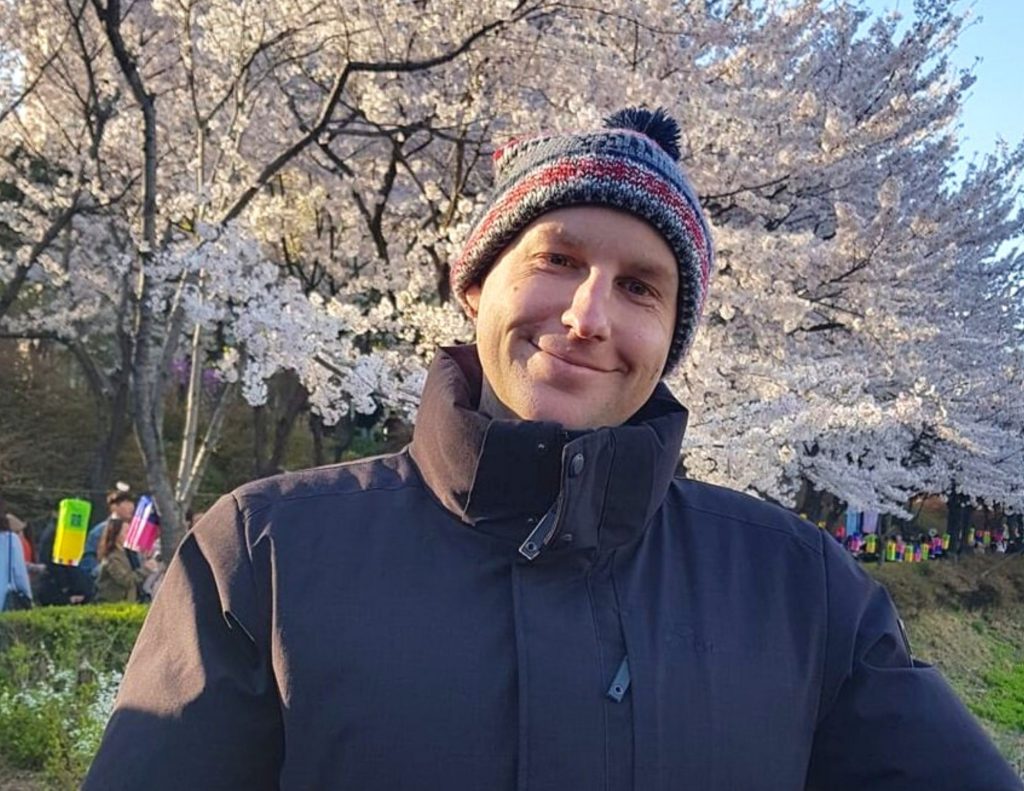
My Favourite Time To Visit Korea
I took a poll (below) in the Korea Travel Advice & Planning Facebook Group to see which activity / season was the most popular, and it looks like seeing the cherry blossoms in spring is definitely the winner. Although the few weeks where cherry blossoms are on display are an awesome time to visit Korea, I actually have a different favourite season in Korea.

My favourite time to visit Korea is definitely autumn. The stunning autumn leaves are on display across the country for about 6 – 7 weeks and there are so many places to go and enjoy them. For me, they’re better than the cherry blossoms and seeing as I’m a big fan of hiking in Korea, I can enjoy them many times.
Read more:
Guide To Hiking In Korea
Best Mountains To Hike In Korea
Korean Autumn Leaves Pictures
I think that part of the reason that autumn is the best time to travel in Korea is because I live here and experience the tough times of summer, with high temperatures and humidity. These aren’t so bad if you only visit for a week or two, but they can definitely get you down after 3 months.
Autumn brings cooler weather, clear skies, and a chance to hike more comfortably while also seeing the leaves begin their slow descent to their next stage in the circle of life. It’s literally a breath of cool, fresh air and a reason to celebrate the changing of the seasons. There’s also a long holiday in September or October – Chuseok – which is a perfect excuse to go away for a few days.
If you’d like to know more about what it’s like to live in Korea and experience all the good, bad, and delicious parts of life here, be sure to take a look at this article:
Read more:
Life In Korea As An Expat
Now, let’s start this Korean season guide with a look at the most colourful season – spring.
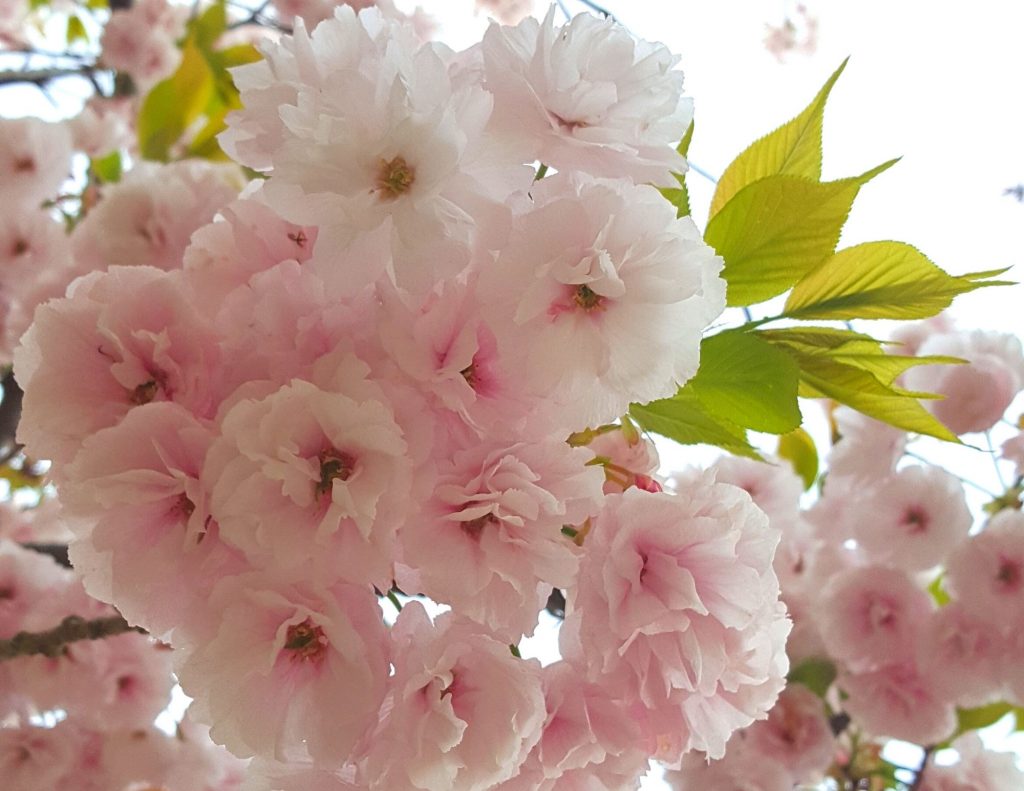
Spring Season Guide For Visiting Korea
Find out all the best things to do in spring in this section of the Korean season guide:
Time To Visit Korea Ranking: 9/10
I have to give spring a 9/10 for my time to travel to Korea ranking. It’s definitely one of the best times to visit Korea and only misses out on 10/10 because of the fine dust that can appear during this season. After a long winter with empty trees and flowers, spring is a real blessing and seeing the rebirth of nature is a splendid event celebrated with many, many festivals in Korea.
Weather In Spring:
Warm with occasional rain in April & May.
Average temperatures range from 10 degrees Celsius in March to 23 degrees Celsius in May.
What To Wear In Spring:
March can still be wintry with chances of snow, so be sure to bring a jacket and cold weather clothing. April is warmer so a light jacket over a regular sweater should keep you warm. It can be wet, so trainers are useful. May is warm and a shirt or blouse should be enough. I’d still bring a light jacket though as the weather can swing between hot and cold a lot.
What To Eat In Spring:
Korea goes crazy for strawberries during springtime and there are lots of special dishes that include this juicy red fruit. You’ll find whole strawberry buffets in Seoul’s hotels and lots of strawberry picking trips you can join in, as well as strawberry festivals. Also popular are fresh vegetable dishes, such as bibimbap. Of course, you might find some cherry blossom flavoured goodies around, such as cherry blossom latte, chocolate, and milk tea.
Best Things About Spring:
Undoubtedly the best thing about spring in Korea is the cherry blossoms. They explode across the country in a wave of pinkish-white and draw people out of their winter slumber and into the parks and mountains. There are lots of spring festivals in Korea that will introduce Korea’s unique culture, nature, dishes, and way of life.
The Best Spring Festivals In Korea
Worst Things About Spring:
Despite the weather being warm and there being many sunny days, spring is also cursed by air pollution. Known as fine dust in Korea, this time of year sees the highest levels. When the fine dust does blow into Korea, it can cause several problems, such as low visibility and breathing problems for sensitive travellers.
How To Deal With Korean Fine Dust
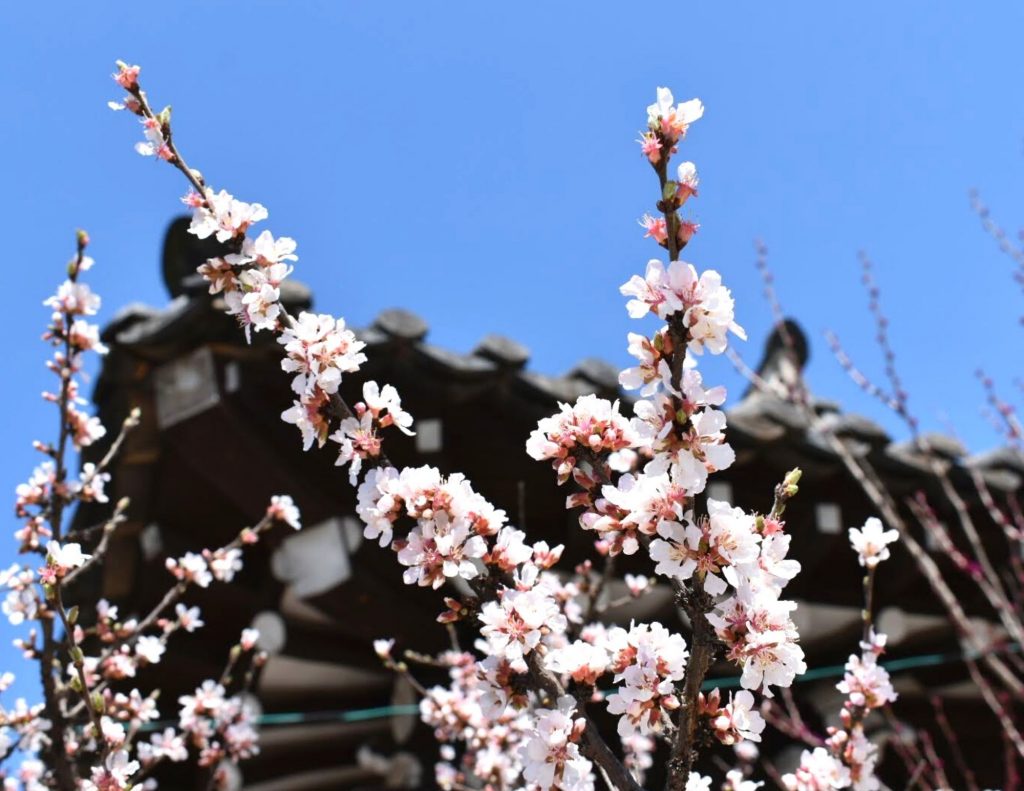
March: The Start Of Spring Blossoms
What To Do In Korea In March:
After the snow melts, the beauty of nature begins to reveal itself in the mountains and fields that break up the sprawling concrete jungles. The best place to see this is in the national parks across Korea, such as Seoraksan National Park and Jirisan National Park. The cool weather makes it a good time to try hiking and you’ll see a wide range of blooms and blossoms.
If you’re in Seoul, I’d recommend walking along Seoul’s Fortress Walls or even making your own way to the top of Namsan Mountain to see the N Seoul Tower. If you want a serious hike in the city, try reaching the peak of Bukhansan Mountain in northern Seoul.
March Festivals:
Before the cherry blossoms start to bloom at the end of March, there is the brave pioneer of spring blossoms – the maehwa (plum blossom – pictured above). These come out in early-late March and there is a festival dedicated to them – the Gwangyang Maehwa Plum Blossom Festival.
If you’re on Jeju Island, then you’ll find two treats – the Jeju Fire Festival – and the first cherry blossom festivals of the year – the Jeju King Cherry Blossom Festival. The Jeju Fire Festival is a traditional festival that involves setting alight the side of a hill to encourage new crops and has fireworks and other attractions. The Jeju King Cherry Blossom festival showcases Korea’s finest cherry blossoms – the King cherry blossom – which you can see in the picture below.
More About Spring Festivals In Korea
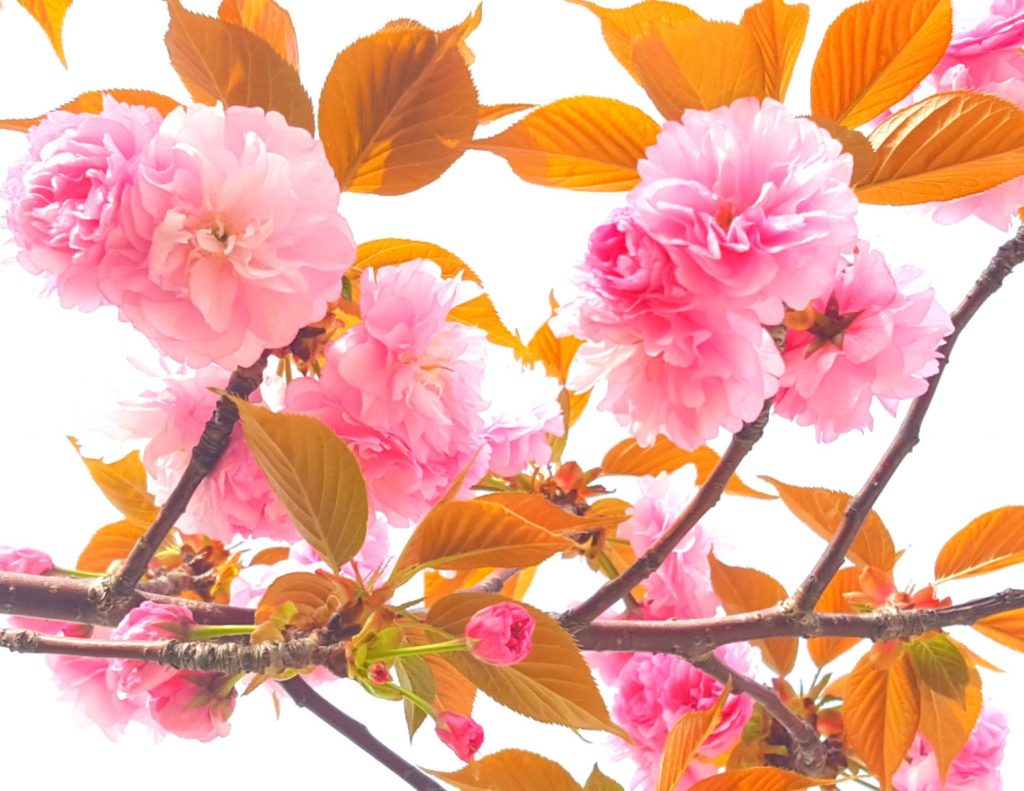
April: Peak Cherry Blossom Season
What To Do In Korea In April:
The highlight of April is undoubtedly the cherry blossoms that grace the country in the first couple of weeks of the month. Some of the best sights of the cherry blossoms in Seoul can be found at Seokchon Lake and along the Han River.This isn’t all there is to do in April in Korea though.
Take a river cruise along the Han River to enjoy the colourful banks lined with blossoming pink trees or visit the royal palaces to see nature and history blended in a beautiful display. For those outside of Seoul, be sure to visit national park such as Jirisan and Gyeryongsan, which host festivals dedicated to the pink blossoms and provide great places to hike for all levels
April Festivals:
During the first two weeks of April you can witness the cherry blossoms showing themselves at many large festivals, including the Jinhae Cherry Blossom Festival, the Jeju King Cherry Blossom Festival, and the Gyeongpodae Cherry Blossom Festival in Gangneung. These will all offer you spectacular views and hundreds of places to see the pink blossoms.
There’s more to April than just cherry blossoms, though. Nature is reappearing and there are festivals dedicated to all sorts of plants and trees. In Seoul you can find the Yeongeungpo Yeouido Spring Flower Festival, which also has cherry blossoms, as well as a wider range of plants. The Goyang International Flower Festival just outside Seoul also offers some incredible sights of a wide range of flowers in full bloom, as well as creative floral displays, photo zones, and interactive gardens.
Seeing Cherry Blossoms In Korea
If you’re travelling to Korea at the right time, then you might be able to witness a real miracle – the parting of the sea in Jindo. The Jindo Sea Parting Miracle Festival occurs only once per year, and during this time you can walk between two islands on the southern coast of Korea. There are other events going on to celebrate this miracle, which usually lasts for a few days.
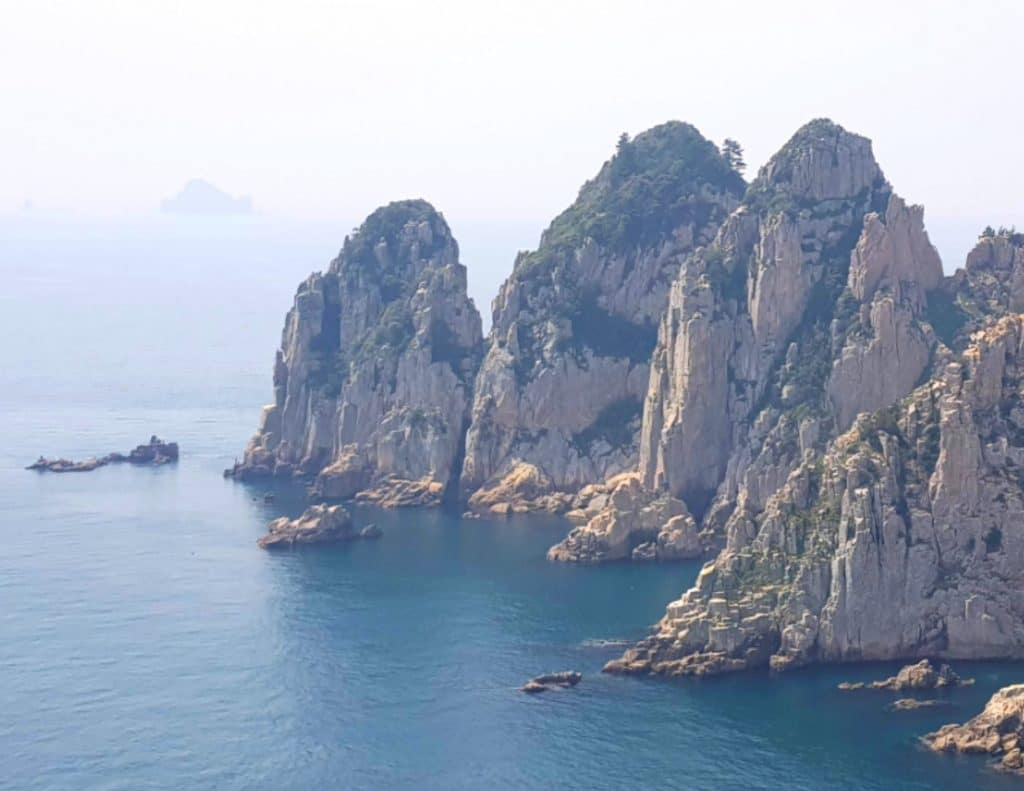
May: Perfect For Travelling Outdoors
What To Do In Korea In May:
The sun is shining and the weather is pleasingly warm, but without the humidity of summer. Sunflowers are climbing towards the sky, flowers are out in full bloom, and it’s a great time to check out some of the parks and outdoors areas in Korea. In Seoul, be sure to visit Seoul Forest or walk along the Cheonggyecheon Stream that cuts through central Seoul.
Visitors to Busan can take a trip to Haedong Yonggung Temple – a stunning cliffside temple that has spectacular views inside and outside of the temple grounds. This is also a great time to head south to check out popular coastal areas such as Yeosu, Geoje, or Tongyeong before they get crowded in the summer.
May Festivals:
Outdoors festivals are plentiful in May, including the Boseong Green Tea Festival, the Damyang Bamboo Festival, and the Taean International Tulip Festival. Nature lovers can also see thousands of butterflies at the Hampyeong Butterfly Festival in May. These areas of outstanding natural beauty can all be reached from Seoul in a day and on your way you can see lots of the Korean countryside.
Two of my favourite spring festivals in Korea are the Seoul Jazz Festival and the Gyejoksan Red Clay Path Festival. The Seoul Jazz Festival is one of the first of the big weekend festivals that run throughout late-spring and summer in Korea and features artists from around the world. The Gyejoksan Red Clay Path Festival near Daejeon is a unique festival that involves running (or walking) barefoot around the 14km Red Clay Path at Gyejoksan Mountain. A truly unique and rewarding experience.
More About Spring Festivals In Korea

Summer Season Guide For Visiting Korea
Find out all the best things to do in summer in this section of the Korean season guide:
Time To Visit Korea Ranking: 6/10
I know several of my friends in Korea will disagree with this, but summer in Korea is too hot and humid and it takes the edge off of all the fun summer activities that you can do here. Some people are ok with the heat and rain, but I think most people will suffer a bit from it. It’s still a great season to travel in Korea, but you need to be prepared for it.
Weather In Summer:
Hot and humid with lots of rain in July and some showers in June and August.
Average temperatures range from 26 degrees Celsius in June to 11 degrees Celsius in August.
This is the start of typhoon season in Asia, so there may be some extreme weather. However, Korea only gets a few typhoons each year.
What To Wear In Summer:
Anything that you’d feel comfortable wearing when it’s hot outside. Shorts / dresses / skirts / t-shirts – things like that. In August you want the lightest clothes possible and a handkerchief for the sweat. Don’t forget your swimwear if you want to go to the beach or water parks. I’d recommend a hat to avoid sunburn, too. If you have sensitive skin, wear long sleeves and trousers. The sun can be intense.
What To Eat In Summer:
The best summer foods are those that will cool you down the most during the strong summer heat. For sweet-lovers, you’ve got to try one of Korea’s most refreshing desserts – bingsu. Bingsu is a big bowl of shaved ice covered in various toppings and sauces. Healthy options include fruit, greedier options pack it full of ice cream, chocolate sauce, and even whole slices of cake!
One of my favourite traditional Korean dishes, which is perfect during summer, is mul-naengmyeon – a big bowl of cold noodles in icy water. This deceptively simple dish is filling, cooling, and the best places produce a great broth that makes you want to finish the whole bowl off. Just try not to make a mess slurping the noodles as you go.
Best Things About Summer:
Summer in Korea is hot and therefore the best time to visit Korea if you love being by the beach or exploring places at night. Korea is a peninsula with some amazing beaches on 3 sides where you can sunbathe, work on your tan, or check out some of the many water sports on offer. If you want a break from the heat, then stay inside during the day and explore at night. Korea is a safe country and many places are open until the early hours of the next morning.
Families and fun lovers will have a great time in the massive water parks in Korea, as well as the various theme parks, including the indoor (cooler!) Lotte World Adventure in Seoul. For a full list of summer fun activities, check out my full article below:
20 Awesome Summer Activities In Korea
Worst Things About Summer:
I’ll be honest, I’m not a big fan of the Korean summer for two big reasons – the weather and the insects. I love hiking, but try to avoid it in the peak summer heat (late July, most of August), and also when it’s raining heavily during monsoon season (early July). The insects, especially the mosquitos, are abundant during this season and you find them everywhere outside the big cities.
It’s not all bad, however, and there can still be plenty of pleasant summer days where it’s sunny, not too hot, and you’re not bothered by insects. Travelling and being active at night is definitely the way to go and if you have a chance, I’d recommend trying to join a night hike in Seoul to experience the best of the city’s night views.

June: Great For Day Tours
What To Do In Korea In June:
June is probably the best of the summer months as the warm weather starts to increase, but it’s not too humid yet. You get the beauty of summer without the suffering. That makes it a great time to take part in some day tours. Travellers in June can see some of the awe-inspiring areas of natural splendour found in Korea, including Nami Island, The Garden of Morning Calm, Damyang Bamboo Forest and the Boseong Green Tea Plantation
Read more:
Great Day Tours From Seoul
Don’t miss the chance to jump on a rail bike and explore Korea’s scenic abandoned rail tracks by pedal power. One such place you can enjoy this is at the Gangcheon Rail Bike – which you can do as part of a tour that includes Nami Island, the Garden of Morning Calm, and the surrounding area.
Read more:
How To Go To Nami Island
June Festivals:
June is surprisingly a quiet month for festivals, but there are still some interesting music and cultural festivals you can check out. Visitors to Gangeung (great beach city on the east coast) can join the Gangneung Danoje Festival – a traditional culture festival that celebrates Korea’s ancient religions through various performances, including a mask dance.
Lavender is in bloom during June, and you can pretend you’re in the purple fields of Provence in France, when actually you’re travelling through Korea. The best place to see this fragrant view is at the Goseong Lavender Farm Festival far up in the north-eastern corner of Korea.
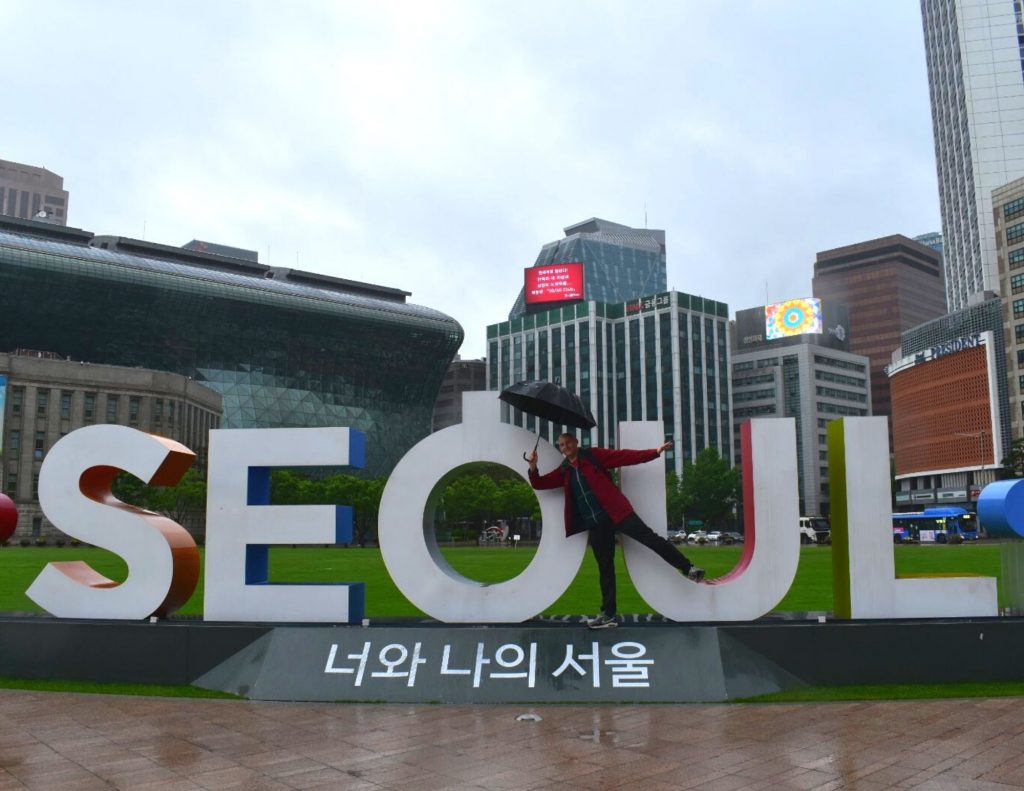
July: The Wettest Month
What To Do In Korea In July:
You’ll definitely want to pack an umbrella if you’re travelling to Korea during July. Not the best time to visit Korea if you plan to do lots of outdoor activities, July is understandably a good time to enjoy indoor activities. With temperatures soaring, the cool climates produced in museums, galleries, and shopping centres can be a true relief.
Fortunately, Korea has plenty of places to visit during this wet month. Dongdaemun Design Plaza – a futuristic looking art-centre in Seoul has plenty of things to do and see, including frequently changing galleries and exhibitions, a design museum, creative spaces, regular festivals & events, and some unique shops to explore.
Things To Do In Seoul When It’s Raining
Visitors to Busan can enjoy the water at the Sea Life Aquarium near Haeundae Beach, or spend time dodging raindrops between stalls at the various markets, including the famous Jagalchi Fish Market and Bosu-dong Book Alley.
July Festivals:
One of the biggest festivals of the year in Korea actually makes the most of the wet weather and revels in it, quite literally. The Boryeong Mud Festival is a massive, fun-filled festival that runs for 10 days in July and welcomes the wet weather as it helps to make the messy mud that everyone will play in. Featuring a range of events, including mud wrestling, mud soccer, and mud swimming, this is the dirtiest festival of the year.
If you want to chill out instead of getting dirty, then head to Daegu for the Daegu Chimac Festival. Chimac is the Korean term for chicken and beer (maekju) – which makes a perfect combo in the summer sun. There’s also the Busan International Rock Festival that runs in July, featuring lots of Korean and international rock artists and weekend camping. Definitely one of the most British-like festivals I’ve been to in Korea.
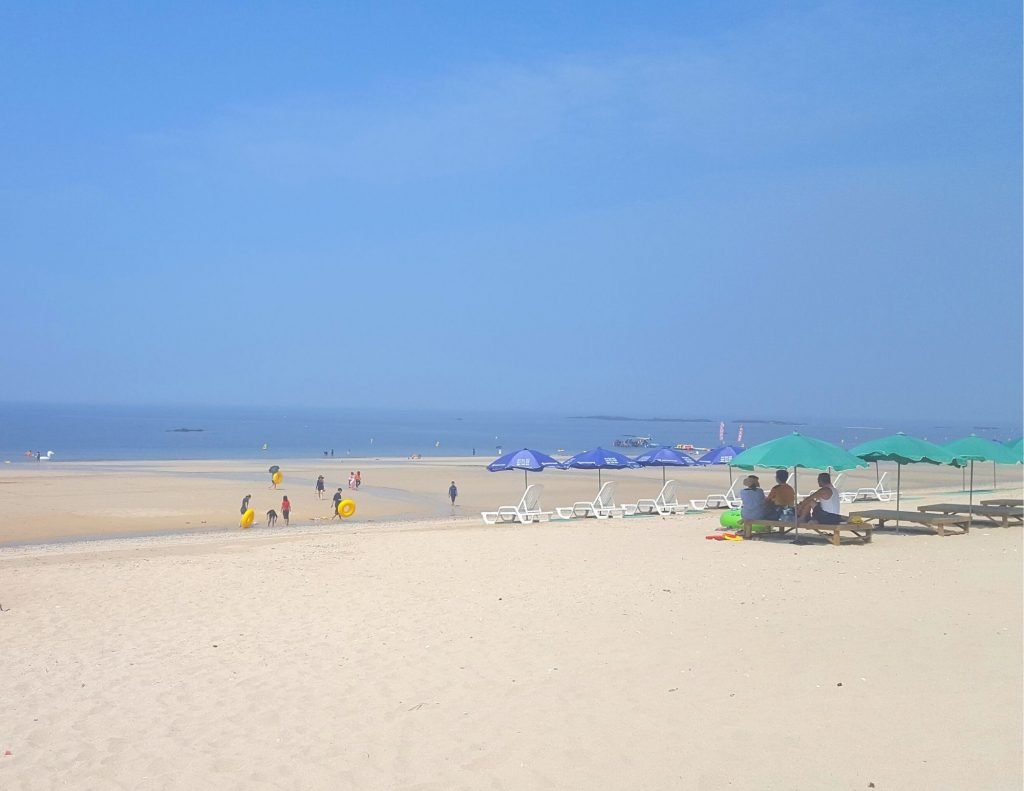
August: Time To Head To The Beach
What To Do In Korea In August:
As with July, the weather is going to dictate what you do in Korea during the month. If you want to check out some lovely beaches and take part in lots of water sports, then perhaps this is the best time to visit Korea for you. You will certainly find plenty of places to visit for both of those in Korea.
Check out Surfyy Beach near Sokcho for that tropical island feeling, with hammocks, deckchairs, beanbags, and palm-topped beach huts selling cool cocktails. As the name suggests, it’s also a great place to go surfing, or learn to surf if you don’t know how. Located just a couple of hours from Seoul, this is a great place to visit for a couple of days to get away from the city.
If you’re in Busan, there are plenty of popular beaches to visit, including Haeundae Beach, Songdo Beach, and Gwangalli Beach. To be honest, though, there are better beaches a few hours away in places like Geoje and Namhae – which are popular summer resort areas where you can rent a place by the beach and eat Korean BBQ outside.
August Festivals:
Get your music festival fix during August at the Incheon Pentaport International Rock Festival or EDC Korea festivals. These big musical events are at the end of August, when the weather is starting to cool down and the days are long and sunny.
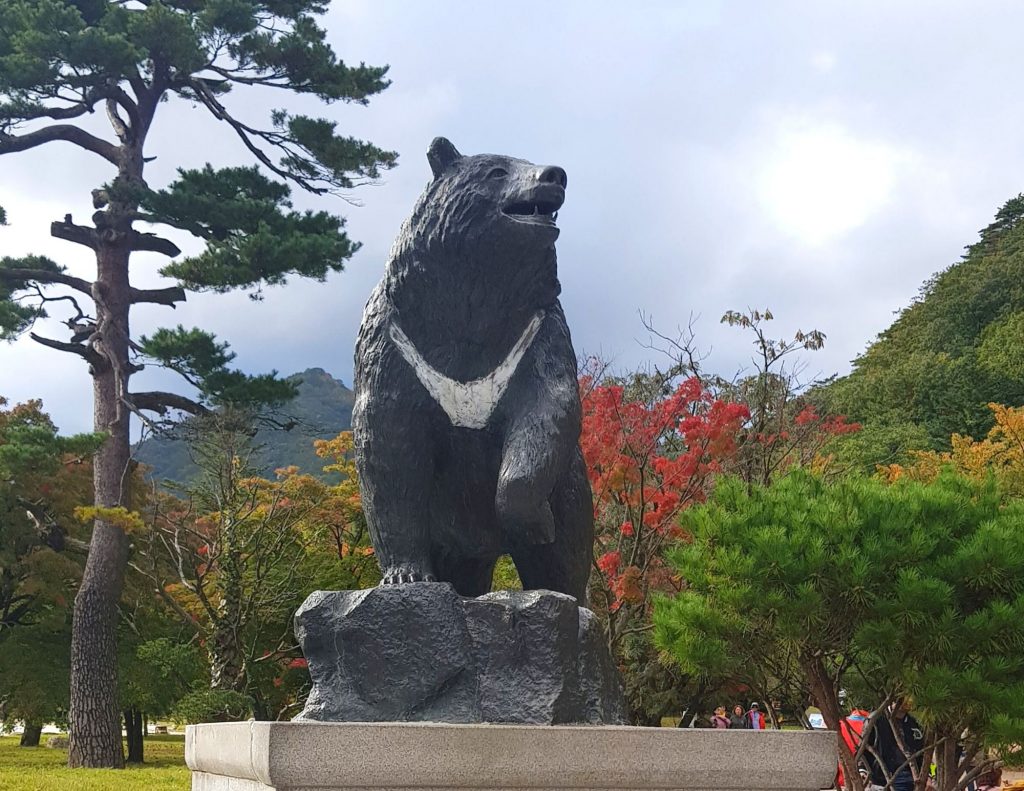
Autumn Season Guide For Visiting Korea
Find out all the best things to do in autumn in this section of the Korean season guide:
Time To Visit Korea Ranking: 10/10
Without a doubt, autumn is the best time to travel to Korea, which is why it scores the highest score. The warm weather makes it possible to enjoy summer activities without feeling as uncomfortable and the autumn leaves are absolutely breathtaking and last a lot longer than cherry blossoms do.
Weather In Autumn:
Typhoon season is still going on in early autumn, so expect some strong winds and rain if you’re in the southern parts of Korea. These are infrequent and most other days are warm and clear.
Average temperatures range from 26 degrees Celsius in September to 12 degrees Celsius in November.
What To Wear In Autumn:
Early September is still hot, with temperatures of up to 30 degrees, so pack light clothes and beachwear. October gets colder and you should bring a jacket and sweater for this month. By the end of November you can see snow in Korea and the temperature quickly changes and can becomes very cold. Definitely bring winter clothes for November.
What To Eat In Autumn:
As autumn is the best time to visit Korea for seeing autumn leaves, you should definitely try out some of the awesome traditional dishes you find in the Korean countryside. One of the most popular dishes served in the national parks is pajeon – Korean savoury pancake that usually comes with fillings such as kimchi, potato, spring onion, or seafood. It goes down well with makgeolli – Korean rice wine – and other dishes such as acorn jelly salad, bibimbap, and tofu with kimchi.
There’s an increasing number of really good cafes in the countryside these days, where you can sip on a strong coffee or sweet potato latte and take in the picturesque views spreading out in front of you. Autumn is chestnut season, so you’ll find lots of dishes made with this, including yummy chestnut bread.
Best Things About Autumn:
Known as the shortest season in Korea, autumn seems to zoom by and that’s probably because everyone is having such a good time. They do say that time flies when you’re having fun! Every weekend from mid-September to mid-November is a chance to get out of the cities and into the lush countryside to witness the leaves changing colour, or simply to burn some calories by hiking in the mountains.
The weather is amazing, making this such a nice time to visit Korea and to explore as much as possible. You don’t have to be a fan of autumn leaves to enjoy it, though. The weather is warm enough to do all those things you love to do in summer, and also cool enough to get dressed up in hanbok, go sightseeing, enjoy shopping in Korea’s busiest markets, and do everything you have waiting on your South Korean Bucket List.
Worst Things About Autumn:
What makes autumn the best time to visit Korea is sadly what also makes it tough to travel at this time – the many amazing things to do. Travelling in Korea during autumn can be hectic as there are so many people visiting and travelling within Korea that hotels and tours can be booked up in advance (especially during peak autumn leaves time).
The Chuseok holiday in September or October (it changes each year) is manic, with millions of Koreans moving across the country and severely limiting the transport options for tourists. Even expats in Korea find it hard to book trains and buses at this time! It’s a sure sign that there is a lot to see and do, however. If you can put up with the rush, you’ll be well rewarded.
There are also a few typhoons that make their way to Korea during the start of autumn, which can cause some serious damage to southern areas such as Jeju Island and Busan. There will usually be several days’ notice before a typhoon hits and most move out to China or Japan and miss Korea.
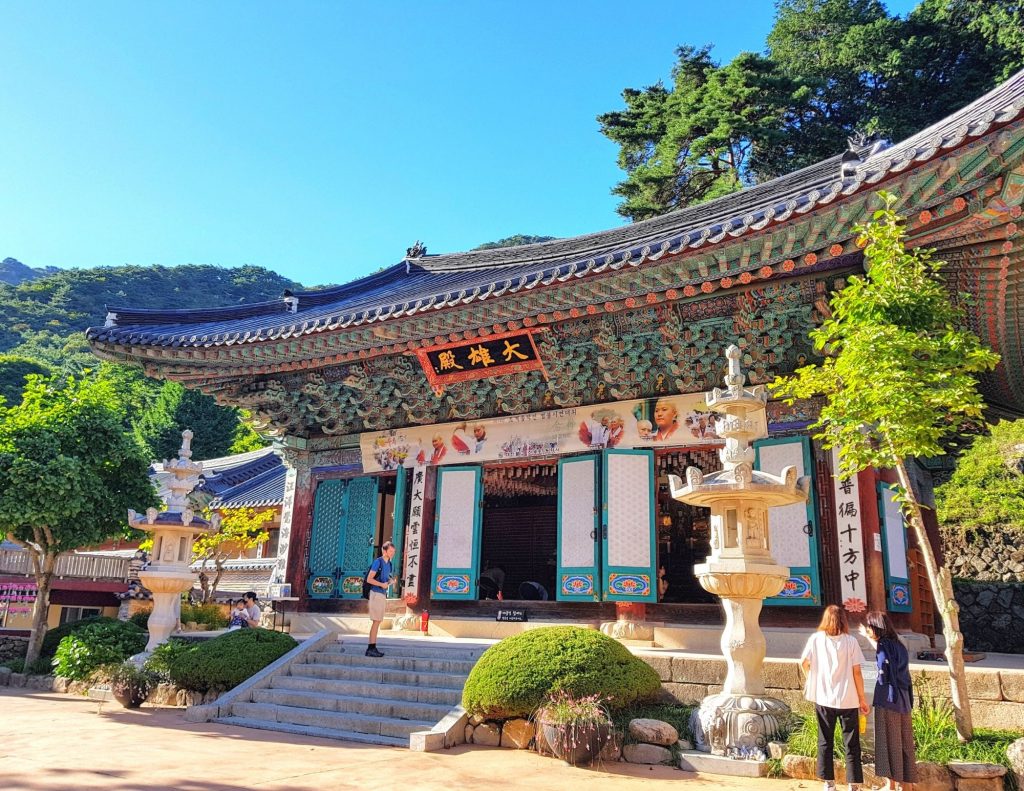
September: Still Time For Summer Activities
What To Do In Korea In September:
September is one of the sunniest times of the year in Korea (excluding when the typhoons hit). That makes it the perfect time to get out and enjoy all those summer activities that might not have been so much fun in the heat of July or August. The picture above is from Odaesan National Park in September. As you can see, the weather is perfect for being outside.
Trips to the beach and hiking in the mountains are always good (you can enjoy hiking year round), but I personally find one of the best activities in September is walking along the Han River in Seoul. Koreans are still in a summer mood, with sunshades & tents, live music, fireworks, and picnics on the grass all being very popular.
There are also the night markets that run at night during the weekends to wander through. If you get hungry, there are usually plenty of food trucks waiting to introduce you to some delicious modern Korean fusion food or just good old fried chicken. Cheonggye Plaza in central Seoul is another place where you’ll find a lively summer atmosphere with magic shows, street performers, markets, and traditional goods and foods on display.
September Festivals:
September is a time for culture and tradition in Korea, with the Chuseok holidays reminding everyone to be thankful for the good harvest and about their origins. There are usually Chuseok cultural performances in historic areas in Seoul, such as Gyeongbokgung Palace. To learn more about Korea’s traditional side, why not visit the Andong International Mask Dance Festival, which has a packed programme of cultural shows and performances, including the famous mask dances.
If you’re not a fan of crowded festivals, then seek peaceful solitude at the Muju Firefly Festival, where you can observe these fiery insects in the cool nighttime. Lovers of flowers who missed the chance to see the spring flower festivals can visit the Goyang Autumn Flower Festival instead, which features colourful cosmos, bright and bushy chrysanthemums, and ever-radiant sunflowers.
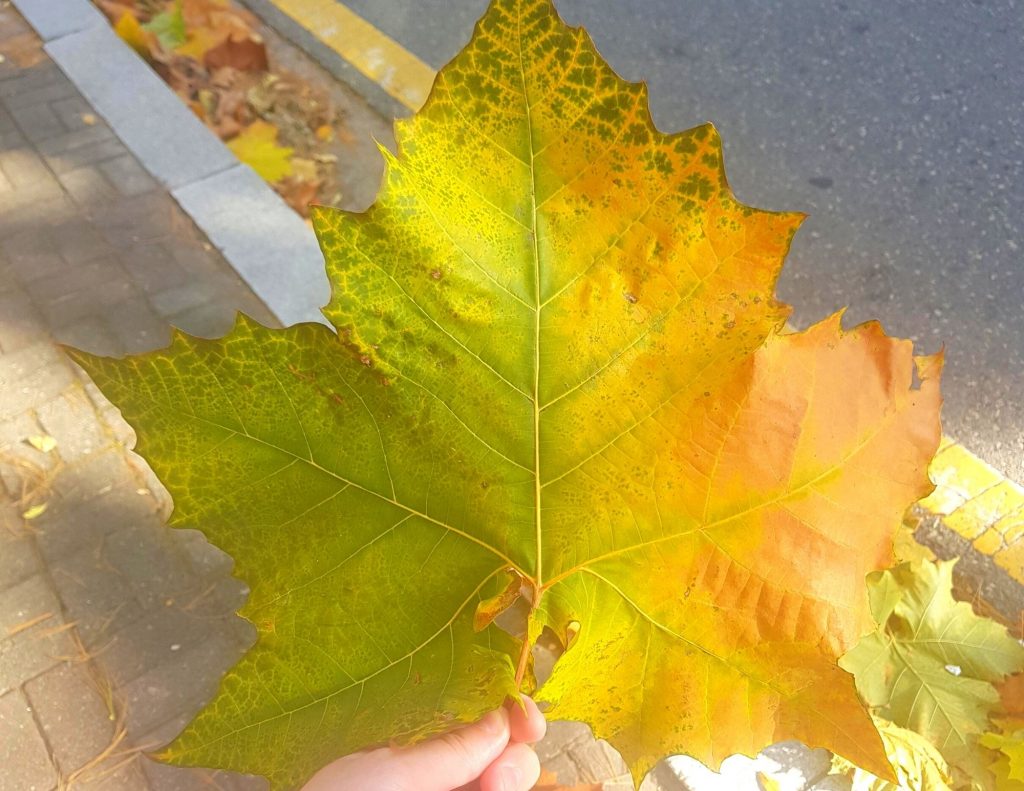
October: The Best Time For Autumn Leaves
What To Do In Korea In October:
It’s hard to write a summary of what to do in October as it really is one of the best times to visit Korea and you can do so much. The weather is clear and fresh, it’s not too hot or cold, and nature is putting on a dazzling display of fall foliage. You can enjoy all of the various bucket list activities that Korea has to offer, but of course you’d be missing out if you didn’t take at least a few pictures of the autumn leaves. For the best places to see autumn leaves in Korea, head to Seoraksan National Park or Jirisan National Park.
If you don’t fancy the thought of travelling all the way to one of the magnificent national parks in Korea, then you’re in luck as you can see autumn leaves pretty much anywhere. In Seoul, be sure to visit Seoul Forest, the Han River Parks, Namsan Mountain (N Seoul Tower), or Changdeokgung Palace. Have time for a day tour? Then head to the Garden of Morning Calm and Nami Island, too.
Where To See Autumn Leaves In Korea
Visitors to Jeju Island should head to Hallasan National Park for 360 degree views of the island and fall leaves on a sunny day. It’s also still warm enough to visit some of Jeju’s sandy beaches in early October. I’d recommend Hamdeok Beach on the north coast for chilled beach cafes, long sandy beaches, and scrumptious seafood.
October Festivals:
Anywhere you go to see autumn leaves will feel like a festival, with busy crowds, food vendors, and other events going on. If you want a different sight from falling leaves, then why not check out the rising silver grass reeds instead? The best place for this is at the Seoul Silver Grass Festival in Haneul (Sky) Park near the Han River. There are lots of fun picture spots and the park has great views of the river and city below. Seoul Forest Park is also a good spot for these reeds.
Fans of traditional lantern displays are in for a treat in October thanks to the Jinju Lantern Festival. The southern city of Jinju goes all out and puts on a marvellous display of lanterns in all sizes (even dragon-sized!). The Jinju Lantern Festival is a great day out and there is lots to see, including the fortress (with lantern soldiers), the river, and festival activities such as lantern making.
For a different kind of culture, head to Busan for the Busan International Film Festival, which showcases some of the latest and greatest films from Korea, Asia, and the rest of the world. You’ll find lots of movie-related attractions in the area, too.
Check out my complete guide to Visiting Korea in October for full information about the best festivals, activities, sights, and more.
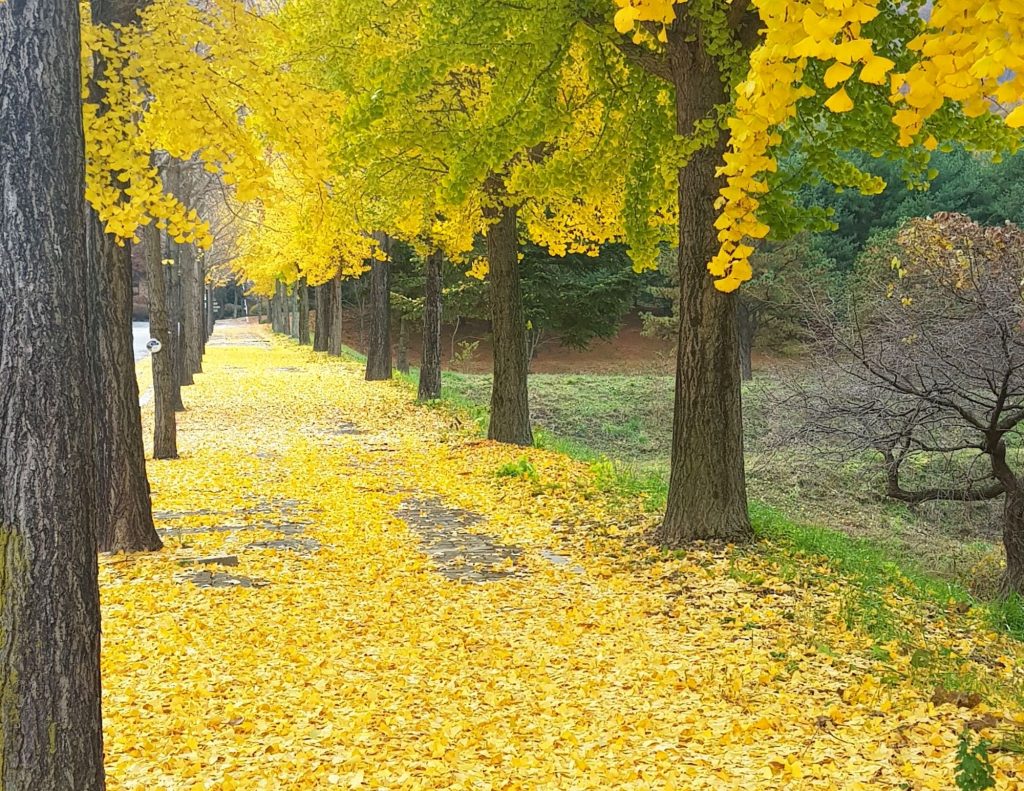
November: A Month Of Rapid Changes
What To Do In Korea In November:
Early November is still a great time to check out autumn leaves in Korea, especially in the lower half of the country and Jeju Island, where the weather stays warm for longer. The picture above was taken in mid-November and as you can see there are still plenty of golden ginkgo leaves on the trees and on the ground. These leaves look even better off the tree in my opinion.
The seasons quickly change in November and you can go from wearing a light jacket to suddenly being frozen and seeing snow on the ground. It’s hard to be prepared for this season as the temperature and conditions change a lot. Make sure you have some flexible plans and it’s probably best to prepare for wintry weather in late November.
This can be a good time to visit theme parks in Korea, such as Everland or Lotte World near Seoul as kids are working hard at school and the cooler weather puts some people off. You might also want to consider indoor activities, such as the COEX Mall in Gangnam – home to the Starfield Library and the COEX Aquarium.
November Festivals:
As this is a busy time for Koreans, especially high school students who will sit their life-defining SAT exams, there aren’t as many festivals going on in November. Not to worry, though, there are still a few festivals that are aimed at sharing Korean food and culture with visitors to Korea.
One such festival is the Seoul Kimchi Making Festival. This festival introduces the world to kimjang – the process of making and preparing kimchi for the year ahead. You can have a go at making traditional Korean kimchi and enjoy sampling all the various types of kimchi (there are over 200 of them!) and witness traditional Korean life.
Interesting Facts About Korean Culture
The other big festival in November is the Seoul Lantern Festival. You’ll find this festival along the Cheonggyecheon Stream that flows from Cheonggye Plaza and down through central Seoul. There are hundreds of colourful lanterns that decorate the shallow depths of the stream. It’s best to visit at night so you can see the lanterns glowing brightly, and also grab some food from the food trucks and stalls that open in the evening.
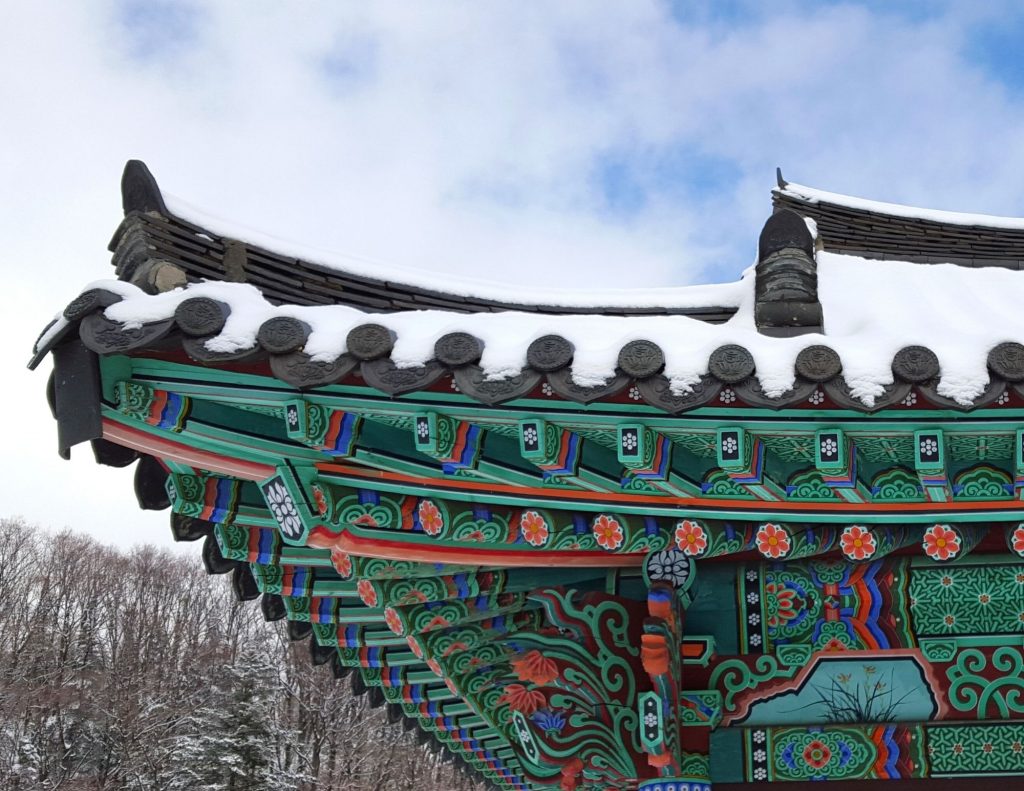
Winter Season Guide For Visiting Korea
Find out all the best things to do in winter in this section of the Korean season guide:
Time To Visit Korea Ranking: 7/10
Winter definitely scores higher than summer for me as I don’t mind the cold weather and I love it when it snows in Korea. Seeing snow on the royal palaces, or high up in the national parks is an incredible sight. There are also lots of amazing winter foods to sample that will warm you up, and winter sports to take part in.
Weather In Winter:
Cold and dry with plenty of clear days. Expect grey skies when it’s snowing.
Average temperatures range from 4 degrees Celsius in December & February to -4 degrees Celsius in January.
What To Wear In Winter:
The weather during winter in Korea is going to be cold, often remaining around or below 0 degrees Celsuis for most of January and February. It’s best to bring a warm jacket and some thick clothes that you can change out of quickly when you move indoors. Sneakers or hiking boots will help, especially if you’re planning to walk in the snow. Korean houses and buildings are generally really well heated (often too hot) and you will fell warm inside.
Fortunately, you can buy a wide range of winter wear when you’re in Korea and it’s cheap and well made. Head to the traditional markets for the best bargains. Find more tips about how to survive and dress for winter in my detailed guide to this snowy season
How To Survive Winter In Korea
What To Eat In Winter:
Winter is one of my favourite seasons for indulging in Korean food. With long, cold days, there’s nothing better than a hot stew or cooked meal indoors. I’d recommend kimchi jjigae (kimchi stew), budae jjigae (army stew), Korean BBQ, or mandu-guk (dumpling soup).
Of course, if you’re out and about, then you’re going to need a hot snack to keep you energised. There are plenty to choose from and you’ll probably want to try them all! Definitely try hoddeok (sweet pancake), gyeran-ppang (eggy bread), tteokbokki (spicy rice cakes), and the cute bungeo-bbang (goldfish bread). Head to Myeongdong’s Street Food Alley for a big selection of these and lots more, although you can find these all over Korea.
The 17 Best Winter Foods In Korea
Best Things About Winter:
It’s the winter festivals that make this one of the best times to visit Korea, as you can enjoy a wide range of unique activities that you maybe can’t do in your own country. Catch fish in frozen lakes, stroll through green tea fields and gardens covered with illuminations, and watch fireworks in Gangnam before heading to the coast to witness the first sunrise of the year. There are loads of great winter festivals in Korea to enjoy.
Amazing Winter Festivals In Korea
I know that many people visit Korea during winter for the chance to see something that they might not normally see in their own country – snow. While it doesn’t always snow in Korea, the sights you can enjoy when it does are spectacular. Frozen ponds and snowy rooftops in Seoul’s palaces, knee-deep snow to stroll through on the many mountains, and even snow-covered beaches in Busan! The snow can make a beautiful traditional scene even more magical.
Worst Things About Winter:
Although dry weather is normally a good thing when you’re on holiday, it can cause problems when it’s cold and I often find my skin drying up and cracking a lot. Be sure to bring moisturiser if you visit in winter. The cold weather can also make it hard to be outside for a long time, especially if you’re not used to it. Suitable clothes are a must, but they take up luggage space and can be a hassle when you’re moving around a lot.
The other bad thing about visiting Korea in winter is the lack of sunlight – days are short and it gets dark around 5pm. This makes it hard to see some sights, but it is also great for seeing winter illuminations and lantern festivals. A lot of Korean cities actually look better at night anyway, so this might be a blessing in some ways.
Due to seasonal fires and burning in other parts of Asia, as well as increased pollution from heating, there can be some bad fine dust days during winter. This isn’t as bad as it is in spring, but it’s something to consider.
Find Out More About Fine Dust In Korea
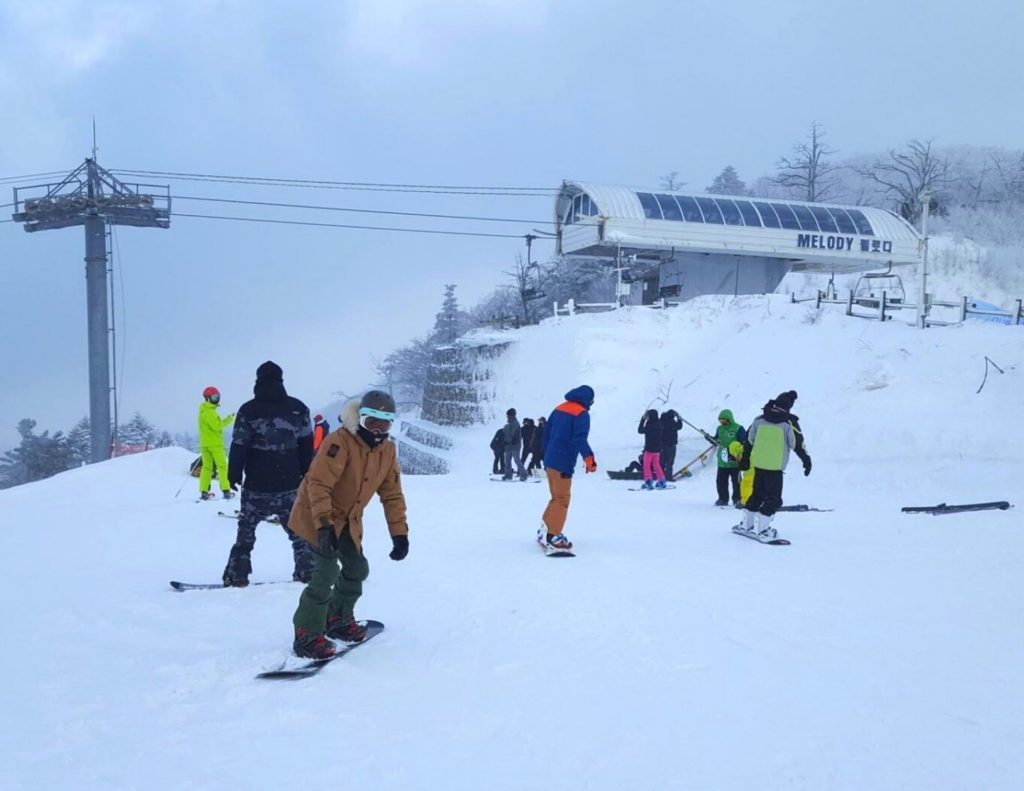
December: The Start Of Winter Sports
What To Do In Korea In December:
Winter brings lots of cold weather and a chance to get out and enjoy some winter sports. There are many big ski resorts in the northern half of Korea, including the state-of-the-art Vivaldi Park in Gangwon Province near Seoul. You can take day trips here to play in the snow and take part in winter sports, or spend a long weekend on the slopes in one of the many hotels. These are usually family friendly places, with areas for kids (big and small) to play in the snow and try sledding.
If you choose to remain in the big cities, then you’ll find lots of colourful displays as Korea gets ready for the Christmas & New Year holidays. New Year is bigger in Korea than Christmas, but they’re both days off for Koreans. Visit the big department stores and malls to find winter and Christmas-themed displays, or walk along the Cheonggyecheon Stream to see the Santa lantern displays floating in the water.
December Festivals:
With dark days in December, the winter illumination festivals are a perfect way to light up your trip to Korea. The best time to visit Korean illumination festivals is obviously when it gets dark, but most of them have ways to keep you entertained even before the sun sets. You can see winter illuminations at The Garden Of Morning Calm, Boseong Green Tea Plantation, and Herb Island.
Christmas in Korea is a time for couples and it’s normal to celebrate with a big meal out. There are many festivals to celebrate New Year’s Eve in Korea. Head to a temple to enjoy the traditional New Year bell ringing ceremony, or see Seoul’s fireworks displays in places such as COEX in Gangnam, Lotte World Tower in Jamsil, or along the Han River. You’ll find temples and New Year’s Eve fireworks in most big cities in Korea.
More Amazing Winter Festivals In Korea
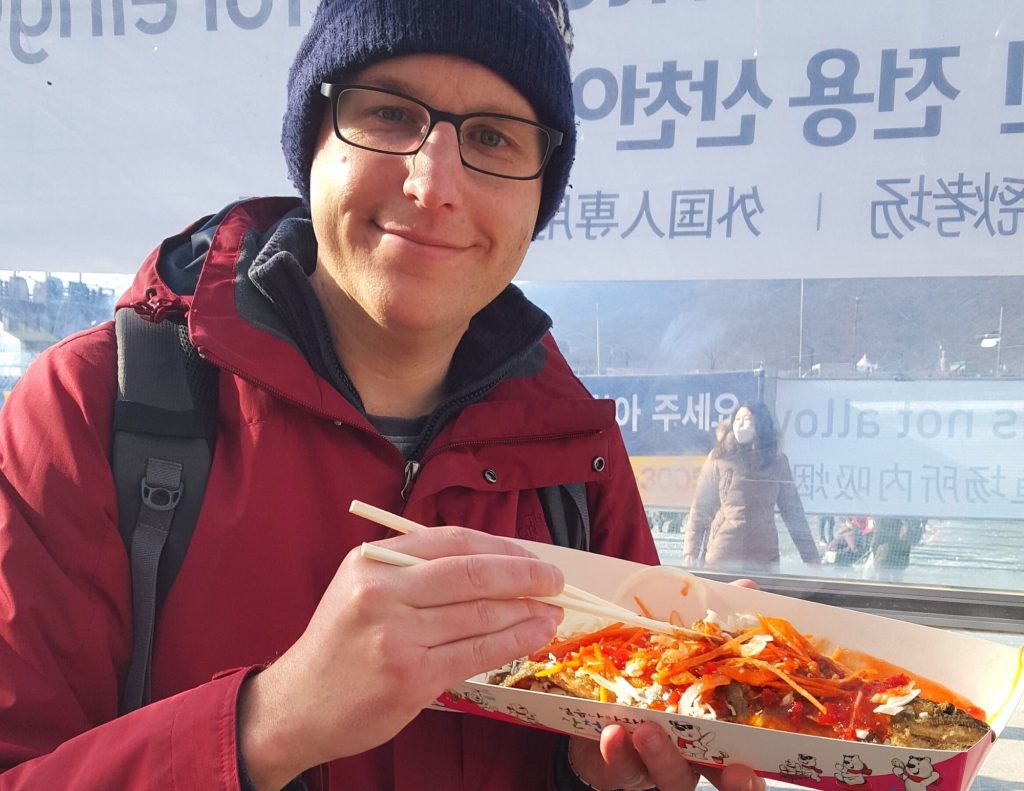
January: Perfect For Winter Festivals
What To Do In Korea In January:
The weather gets even colder in January and that’s actually a good thing, because a lot of the unique winter festivals rely on cold weather. There are several kinds of winter festivals you can find in Korea. The most fun ones are the ice fishing festivals where you can grab a small fishing rod and head to a hole in the ice to catch your own fish. If you’re feeling brave, you can also try catching them bare handed! Once you’ve caught it, you can cook the fish and enjoy it (as I was in the pic above).
If you only have a weekend in Seoul and want to see the highlights of the city during this cold and snowy month, then why not visit Bukchon Hanok Village and see the traditional Korean hanok houses coated in snow. The area is great to check out any time of year, but looks the best on a snowy day. Brave travellers can also rent traditional Korean hanbok to make the scene complete. I’d bring some heat packs to keep out the cold, though.
Cold weather getting you down? Then head to one of Seoul’s many charming cafes. Or better yet, why not try a theme cafe in Seoul? You can escape the snow and mingle with cats, dogs, sheep, and even raccoons in the various animal cafes, or dress up as Harry Potter at Platform 9 & 3/4. There are also cafes where you can read, paint, sit in a tent, and recharge before going back into the cold again.
January Festivals:
Koreans celebrate the New Year by watching the first sunrise of the year. There are many places in Korea to join New Year festivals and welcome the yeah ahead with them. Some of the most popular New Year sunrise festivals in Korea include the Homigot New Year Sunrise Festival (Ulsan), the Seongsan New Year Sunrise Festival (Jeju Island), and the Gyeongpo New Year Sunrise Festival (Gangneung).
As mentioned, there are ice fishing festivals in January where you can catch your own lunch. Some of the best ones are the Hwacheon Sancheoneo Ice Fishing Festival, the Pyeongchang Trout Ice Fishing Festival, and the Inje Ice Fishing Festival. You can access these from Seoul on a tour or by public transport (tours are usually a lot easier as they’re in remote places).
More Amazing Winter Festivals In Korea
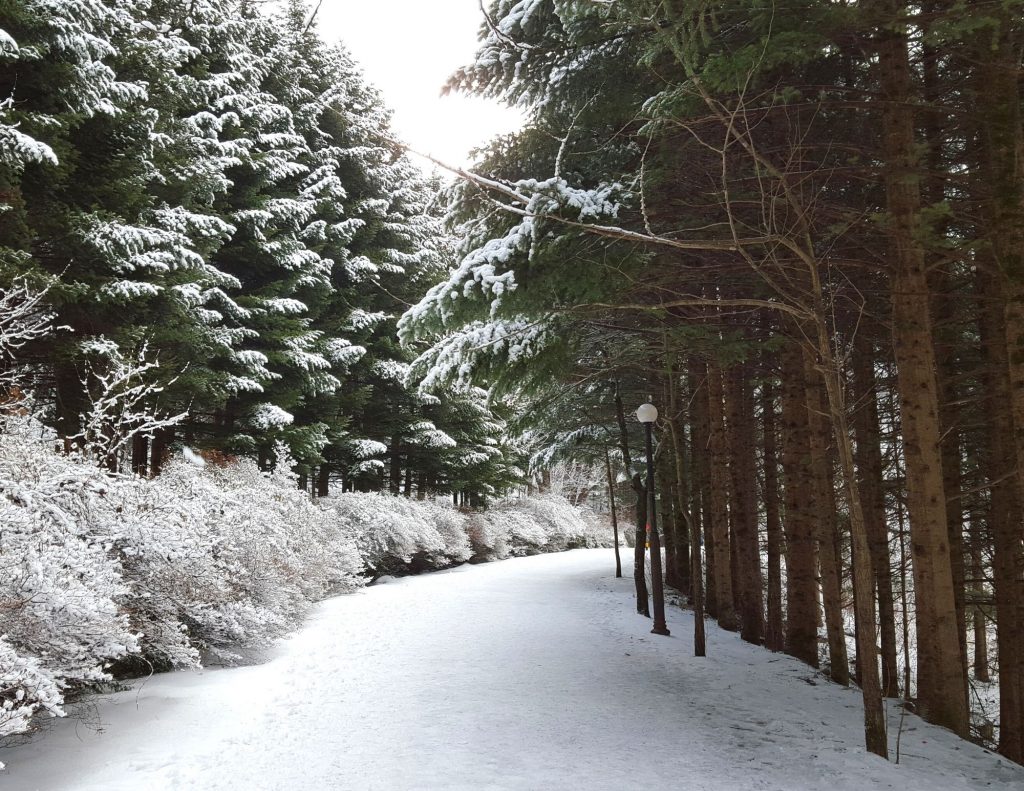
February: The Snowiest Month In Korea
What To Do In Korea In February:
February is the best time to visit Korea if you want to see snow. I know a lot of people visit at this time for the chance to see dreamy scenes of snow-topped buildings and trees in Korea. It can snow anytime between November and March in Korea, but February is the snowiest month and perfect for getting some thick boots on and playing around.
Personally, I love to venture out into the mountains and national parks as this is where you’ll find frozen waterfalls and knee-deep snow. If you don’t mind the conditions, they’re really worth visiting. Bukhansan National Park is a good spot to see snow in Seoul, and you can even see snow on faraway Hallasan Mountain down on Jeju Island.
Families can visit snowy hotspots such as Seoul Grand Park, Everland Theme Park, and Seoul Forest. Other great places to see snow in Seoul include Gyeongbokgung Palace, the N Seoul Tower, and Lotte World Tower. You won’t need any special equipment or clothes to visit these places, but be sure to wrap up warm! For a full guide to seeing snow in Seoul and across Korea, check out my article below:
Where To See Snow In Seoul & Korea
One of the biggest public holidays in Korea occurs in February (but sometimes January) – Seollal. Seollal is the Korean Lunar New Year and is a time for families to get together and prepare for the year ahead. Seoul and other big cities will empty during this holiday, but there are still some small celebrations and cultural performances for visitors at popular places like Gyeongbokgung Palace.
February Festivals:
Thanks to the extra snow, this is the best time to visit Korea’s snow festivals. These fun filled festivals are great for families and offer a wide range of snowy and icy attractions to enjoy. The two biggest winter snow festivals are the Taebaeksan Mountain Snow Festival and the Daegwallyeong Snow Festival. These are quite far away from Seoul but you can reach them with a tour.
Strawberries are in season at this time of year and you’ll find several festivals where you can roam the strawberry fields and pick your own berries. The biggest of these is the Nonsan Strawberry Festival. You’ll often find strawberry picking included in some winter tours, including trips that visit the winter illumination festivals or snow festivals.
When Is The Worst Time To Visit Korea?
I don’t think there’s really a worst time to visit Korea as there’s usually something to do whatever the weather. However, there are times when it’s less comfortable or less enjoyable to do certain activities.
For people who don’t like extreme heat or cold, then the worst time to visit Korea would be August or January & February. These are difficult times to travel in Korea if you have a family, especially very young children who would need extra protection and consideration.
In terms of sightseeing, it’s important to be aware of the big national holidays in Korea – Seollal (Jan – Feb) and Chuseok (Sep-Oct). During these times, travelling across Korea becomes extremely challenging and you may find you have to change your travel plans. Be sure to prepare for these holidays and book ahead if you can. If you’ve ever travelled during Christmas or Chinese New Year, you’ll understand what these holidays are like.
Peak travel seasons such as early April (cherry blossoms) and late October (autumn leaves) will also be very busy, which can make travelling in Korea more difficult. Of course, these are the best time to visit Korea for those activities, so you have to decide on your priorities.
For those who want to see beautiful Korean nature, there’s not much to see from December to February. If it snows, then everything looks amazing, but if it doesn’t… everything looks very empty. The dry and cold winter kills off most plants and even the grass suffers. Once March arrives, nature returns in abundance and stays until the last of the autumn leaves fall in November.
For those who suffer breathing difficulties or have respiratory problems, then winter and spring can be a tough time to be in Korea. When the pollution is bad, you might not feel comfortable going outside. There isn’t much you can do to prepare for it except having backup activities to do indoors. Masks are available across Korea and I’m sure most people are used to wearing them by now.
How To Deal With Korean Fine Dust
Non-stop rain can be a real problem in July with rain falling for several days in a row, or even weeks. I’m writing this in July and there have been about 15 days of rain in the month. June and August can also be a bit wet and if typhoons appear, expect some strong gales.
Joel’s Tips For Visiting Korea
Here are a few tips to help you work out the best time to visit Korea and how to enjoy your journey more easily.
What To Know Before Travelling To Korea
A little bit of research goes a long way and pre-planning your trip to Korea can save you a lot of time and money. It’s important to be aware of some cultural and etiquette issues, as well as practical issues like what type of electricity is used in Korea, how much things cost, where to buy sim cards, how to get around, and the best time to visit Korea.
Whilst this article has covered that last point, I want to offer you some more guides. They’ll be really helpful for planning your trip to Korea:
What To Know Before Travelling To Korea
Basic Korean Phrases For Travellers
Understanding Korean Etiquette & Culture
Transportation Tips For Getting Around Korea
Korea is a technologically advanced country with amazing public transport options. To make travelling in Korea easier, there are a few transportation cards you can use. I’d highly recommend getting one of these to save time and money.
First, the T-Money Card is the standard prepaid transportation card for Korea (like the Oyster in London or Suica in Japan). It’ll let you get onto buses and subways with the swipe of the card and also let you pay for taxis, food, goods, and even entrance fees for some places. It’s accepted in all major cities and is an essential purchase for tourists. Find out more in the article below:
A special card designed for tourists is the Korea Tour Card. This cards includes the T-Money Card and also offer discounts on tourist attractions and shopping. It comes with some unique designs and is a good souvenir for tourists. Find out more in the article below:
Finally, travellers to Seoul who want to do a lot in a short time should check out the Discover Seoul Pass. This premium pass allows free or discounted entrance to some of Seoul’s hottest attractions, including the royal palaces, N Seoul Tower, COEX Aquarium, Lotte World Theme Park, and lots more. It also gives you a free Airport Express train ticket, hanbok rental, river cruise, and bike rental in Seoul.
This card is perfect for families or people with little time and a long to-do list. It can save lots of money and also includes a T-Money card. Find out more about the Discover Seoul Pass, how much you can save, and some suggested itineraries below:
Where To Stay In Seoul
Here’s a few hotel recommendations for two of the best areas to stay in Seoul for first time visitors or seasoned regulars. They offer a glimpse into modern Seoul and are conveniently located with subway links to other popular areas.
Myeongdong:
This is a great location in the heart of Seoul that has many markets, shops, restaurants, and fun places to check out. It’s also close to some of Seoul’s best attractions, including N Seoul Tower and the royal palaces.
Budget Travellers:
Myeongdong K Stay 2
Families & Couples:
L7 Myeongdong by LOTTE
Luxury Travellers:
Lotte Hotel Seoul
Gangnam:
The luxurious district you probably know thanks to PSY’s Gangnam Style. There’s plenty to see and do in Gangnam, including the COEX Mall & Aquarium, Bongeunsa Temple, K Star Road, and lots of shopping.
Budget Travellers:
Myeongdong Rooftop Hostel
Families & Couples:
Mercure Ambassador Seoul Gangnam Sodowe
Luxury Travellers:
Park Hyatt Seoul
For a more detailed breakdown of Seoul’s best neighbourhoods, be sure to check out my detailed guide about accommodation in the city, with loads of travel tips, recommendations, and ideas.
Read more:
Where To Stay In Seoul Guide
Where To Stay In Busan
Here’s a few hotel recommendations for two of the best areas to stay in Busan for first time visitors or seasoned regulars. Whether you’re looking for beautiful beaches, or a bustling downtown area, these areas have you covered.
Haeundae:
The hot place to go in Busan. Gorgeous beaches and great bars and nightlife, as well as traditional markets and cosy cafes. Dalmaji-gil Road in Haeundae has some great views.
Budget Travellers:
Toyoko Inn Haeundae No. 2
Families & Couples:
Arban Hotel
Luxury Travellers:
Paradise Hotel Busan
Seomyeon:
The heart of inner Busan. Away from the coast, but conveniently located with access to two of the main subway lines. No shortage of good bars, restaurants, and places to shop here. Good for getting almost anywhere else in the city.
Budget Travellers:
Uniqstay Bed & Breakfast
Families & Couples:
Arban Hotel
Luxury Travellers:
Lotte Hotel Busan
Best Time To Visit Korea FAQ
Finally, here’s a few FAQs about the best time to visit Korea, in case the above information didn’t cover enough for you.
When is the best time to visit Korea?
April or October
The best time to visit Korea as a tourist is in April or October. These are the best times to visit to see Korea’s beautiful cherry blossoms (early-April) and autumn leaves (October). The weather during these months is some of the best of the year.
Which month is the best time to visit Korea?
It depends on why you want to visit Korea. The best time to visit Korea for snow is February. If you want to see cherry blossoms, then April would be best. For summer activities and visiting the beach, the best time to visit Korea would be August. One of the most popular months is October as this whole month has displays of autumn leaves and the weather is mild.
Which season is the best to visit Korea?
Spring or Autumn
These seasons are the best time to visit Korea for mild weather, popular festivals, and seeing cherry blossoms or autumn leaves. There are fewer mosquitos around and the weather isn’t as severe as winter or summer. Spring has many festivals to attend, including the Jindo Sea Parting Miracle Festival, Jinhae Cherry Blossom Festival, and the Damyang Bamboo Forest Festival.
Does Korea have different seasons?
Yes
The seasons in Korea are definitely well defined and there are many unique things to do in each one. Winter is cold and dry with snow, spring is warm with lots of flower festivals, summer is hot and humid with some typhoons, whilst autumn is cool and clear. There are a variety of festivals to enjoy in each season and lots of different seasonal dishes to try.
Is summer in Korea hot?
Yes
Whilst summer in Korea isn’t as hot as some tropical countries, the humidity and heat can make late July and August uncomfortable times to visit Korea. Temperatures are rising each year and can reach 35 degrees at the peak of summer. However, with humidity, it feels hotter than that.
Does it snow in Korea in winter?
Sometimes
It doesn’t snow all the time in Korea, but there can be snow any time from November until March. The snowiest months are January and February. You are more likely to see snow in the higher places like the national parks. January and February are the best time to visit Korea for winter sports, including skiing and snowboarding. Korea has many ski resorts that open during winter.
When is the best time to visit Korea with children?
Spring or Autumn
The best time to visit Korea with children would be spring or autumn as the weather is not as extreme as summer or winter. Summer has a risk of dehydration and sunburn, as well as bites from insects. Winter can be very cold, with temperatures below zero for most of January and February. Spring and autumn are milder. There are lots of family friendly places to visit any time in Korea and children can enjoy playing in the snow in winter or visiting water parks in summer.
Liked this? Pin It For Others
If you enjoyed reading this article, then please go ahead and share this with your friends on Pinterest.
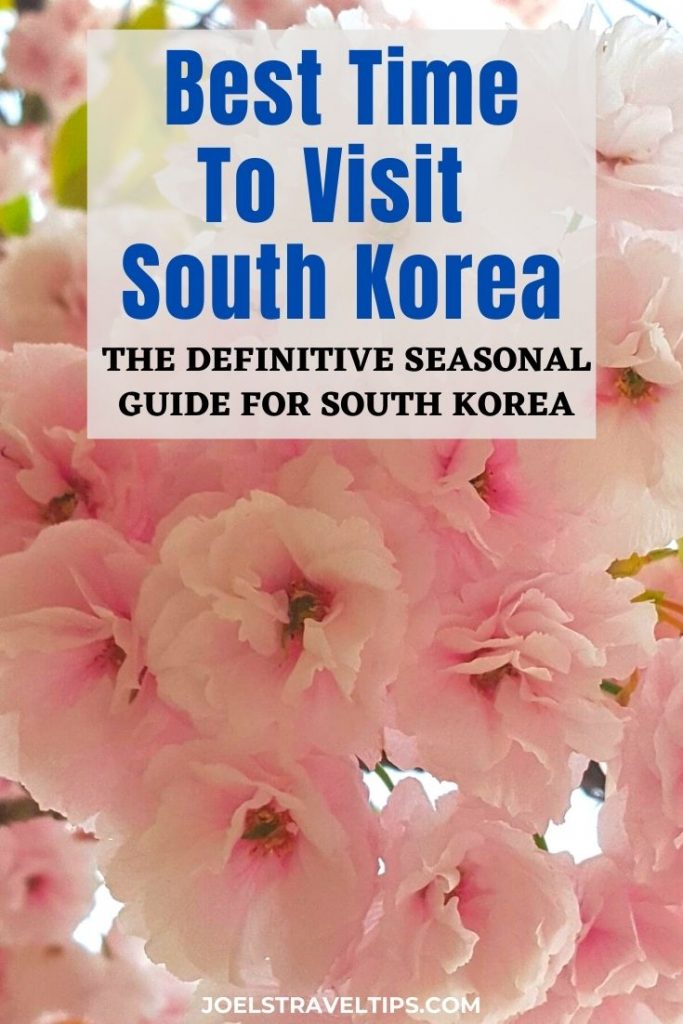
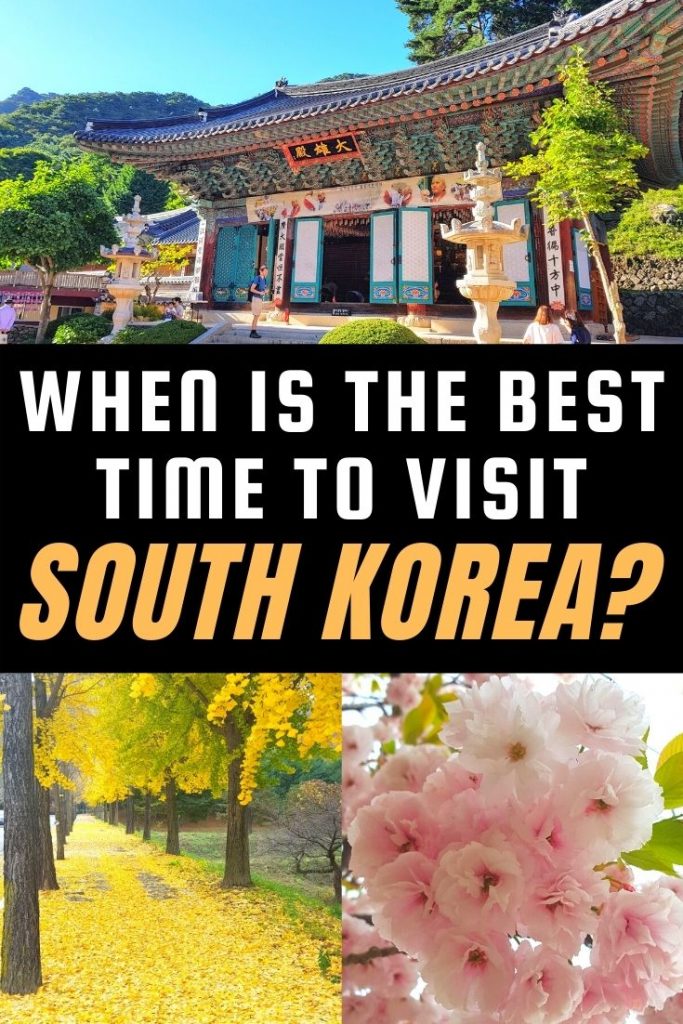
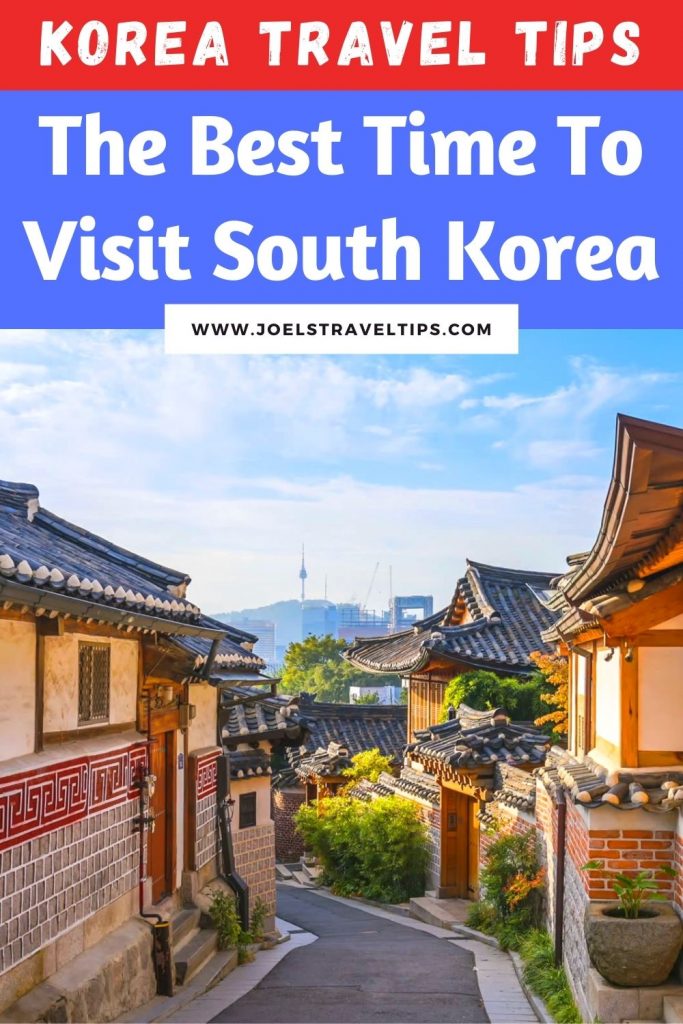
You Might Also Like:
Here are some other great articles that you might want to read about travelling in Korea. Remember, if you have any questions about anything, please feel free to post a comment or join the Korea Travel Advice Facebook Group.
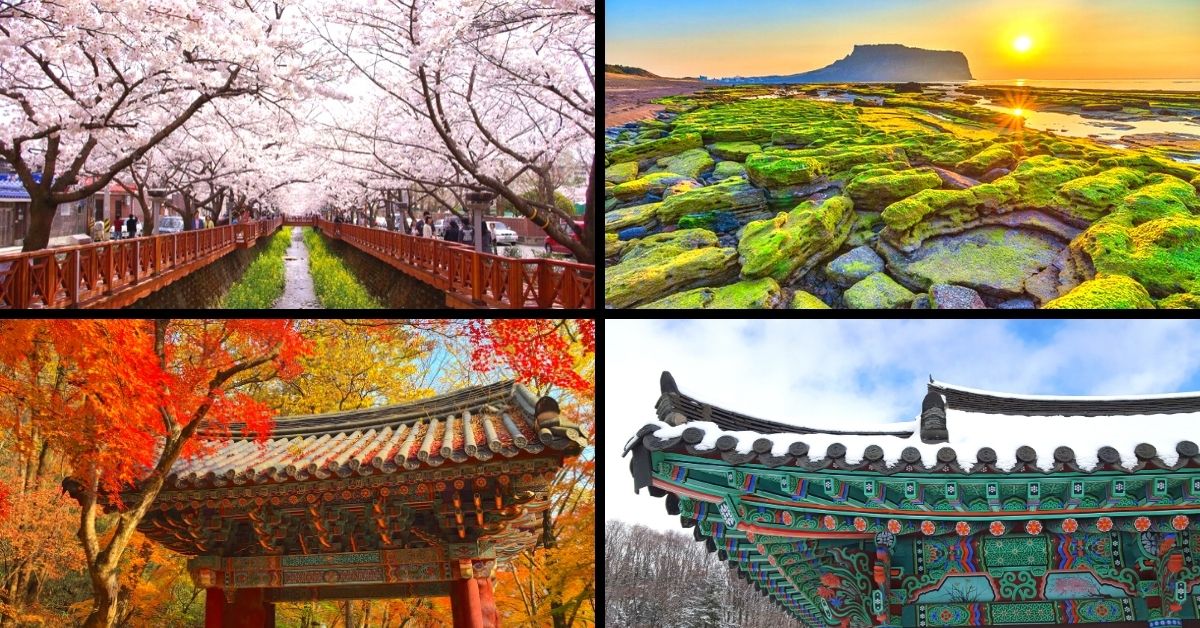
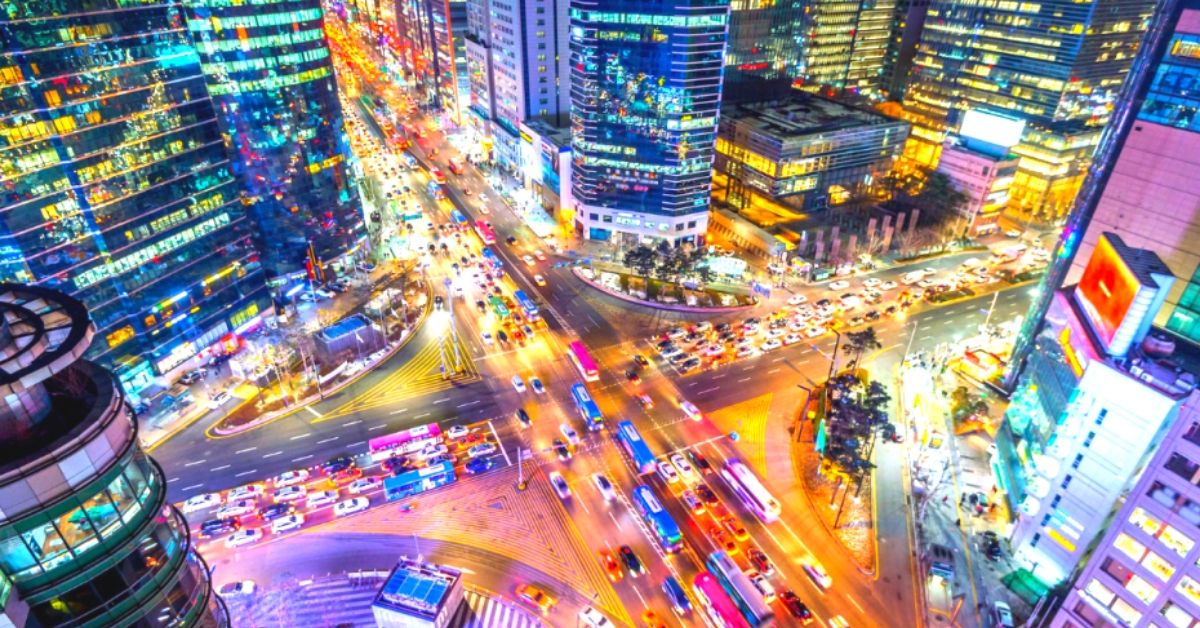
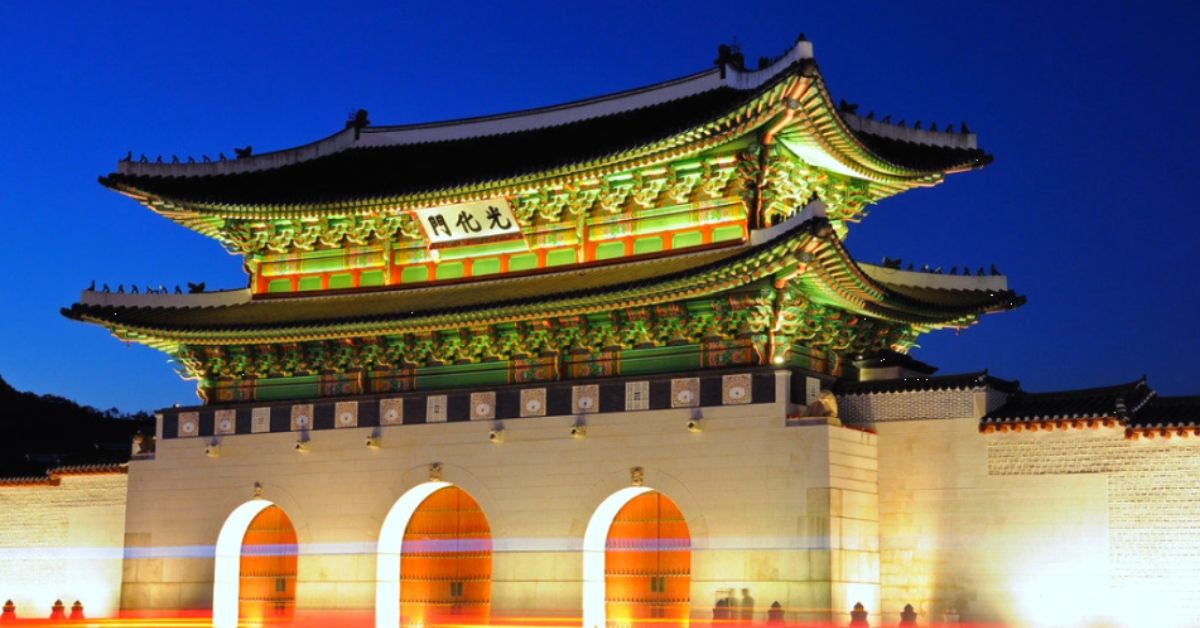
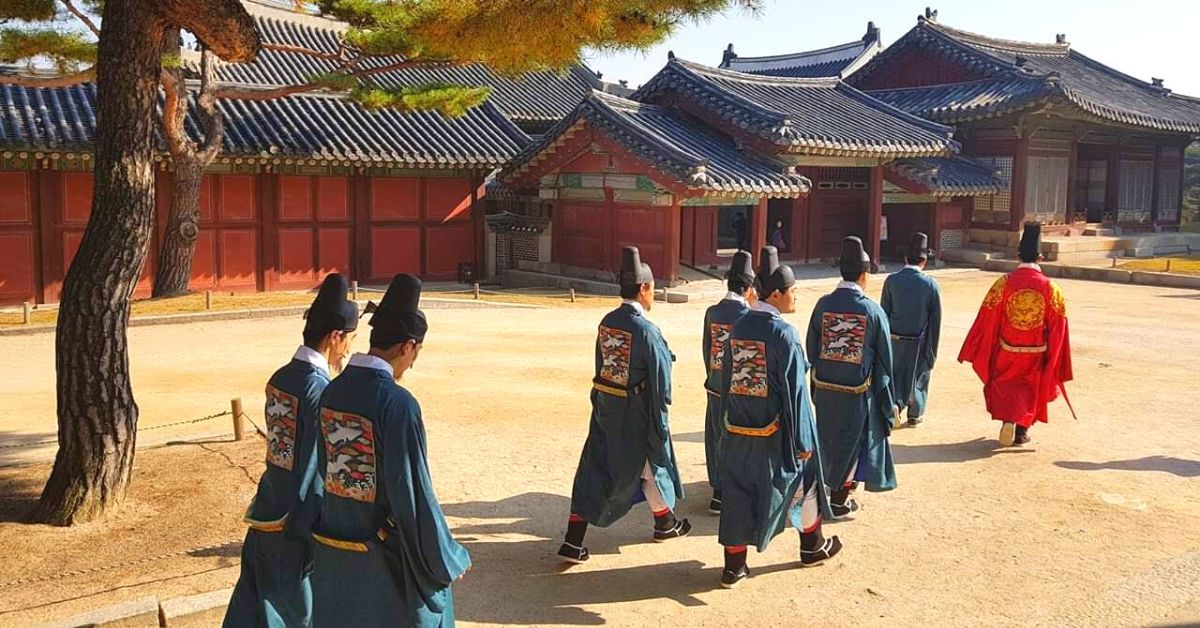
I like to visit at south Korea because i heard it was very beautiful osm place as a person from a small state of Tripura /india i will be pressure to go atleast once time whim my dream will be comes true and probably i like to thanks our organization who could believed me and take over there as a very lower class family belongs to me and by the grace of god with u all senior one and our organization will be very thankful from the bottom of my heart there sis/miss it will be great pleasure to be South Korea thanking u.
I hope you can visit South Korea one day. Good luck and safe travels 🙂